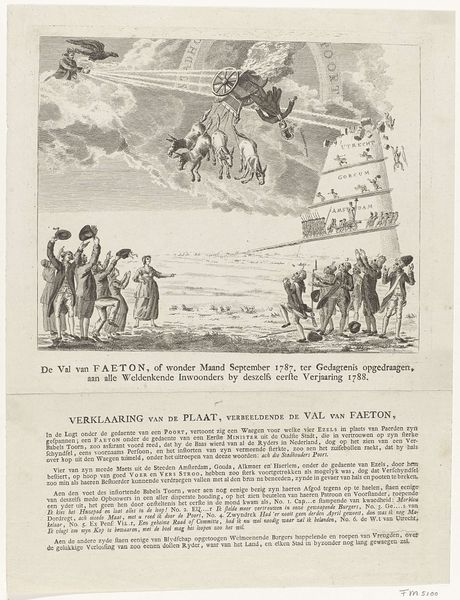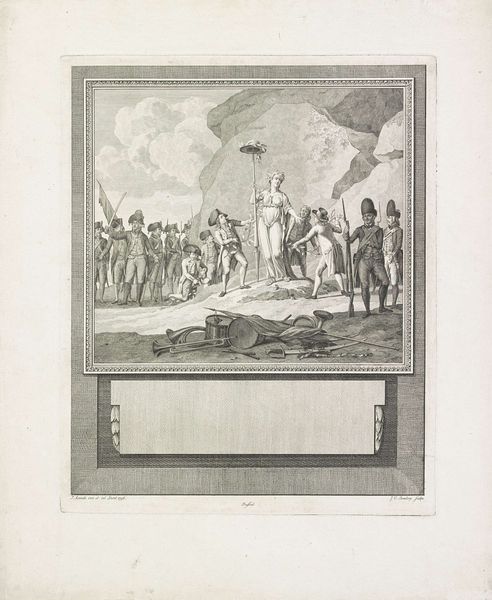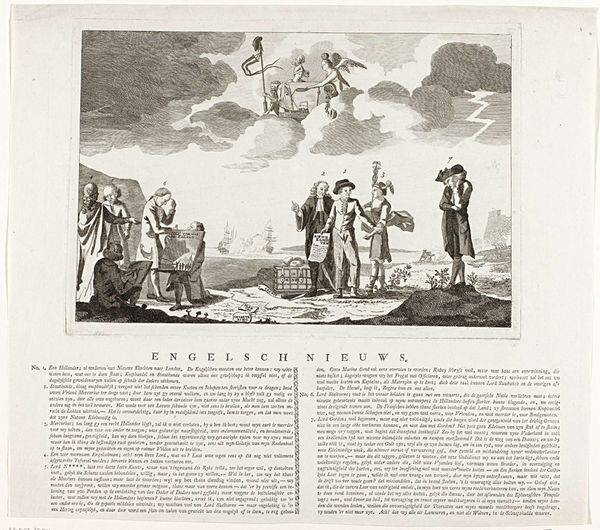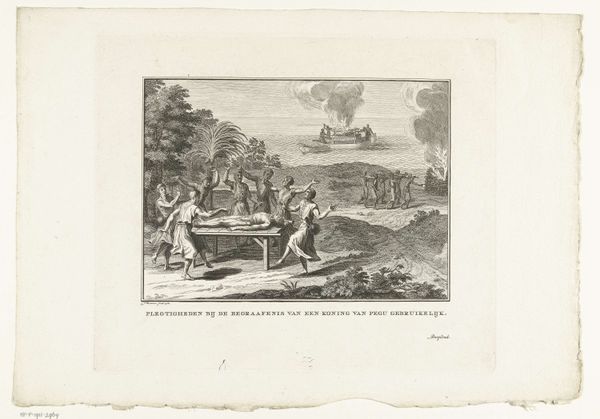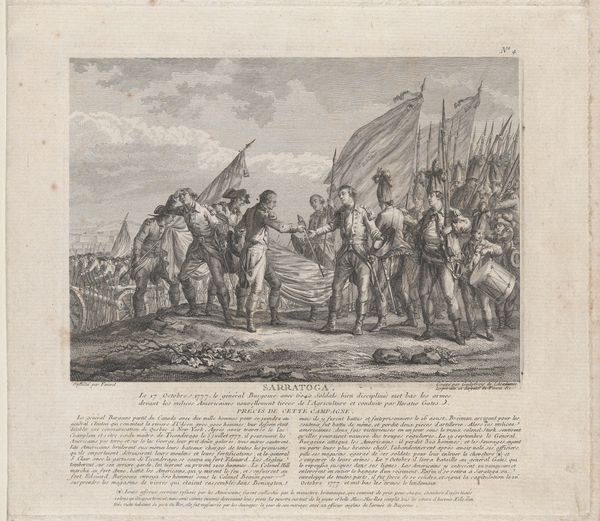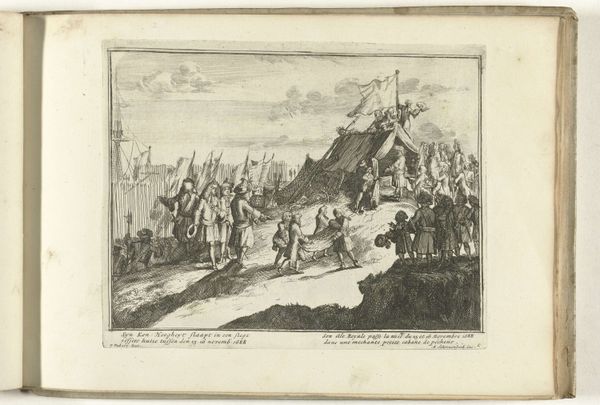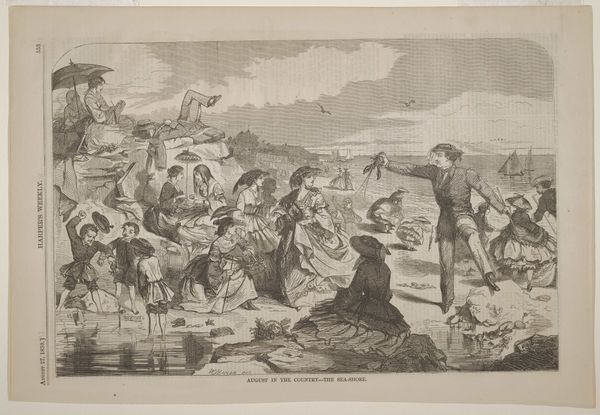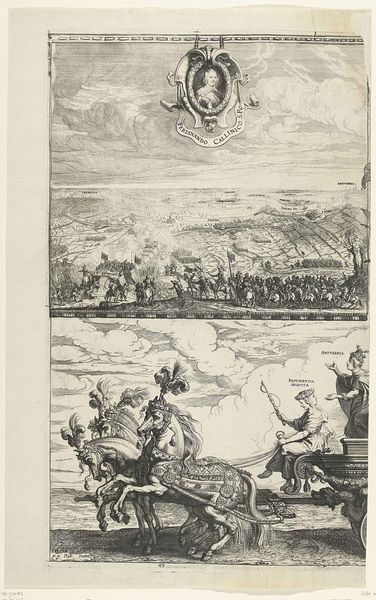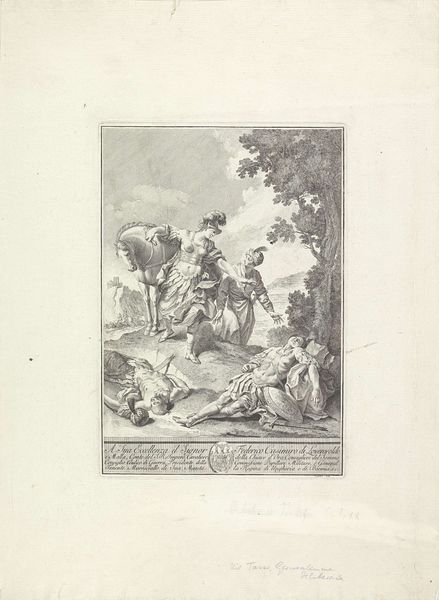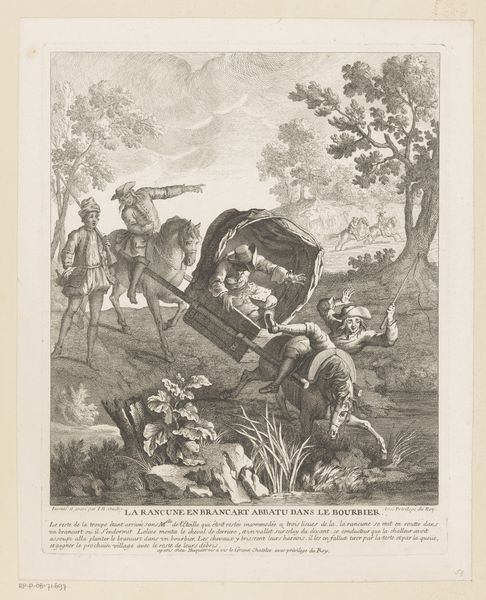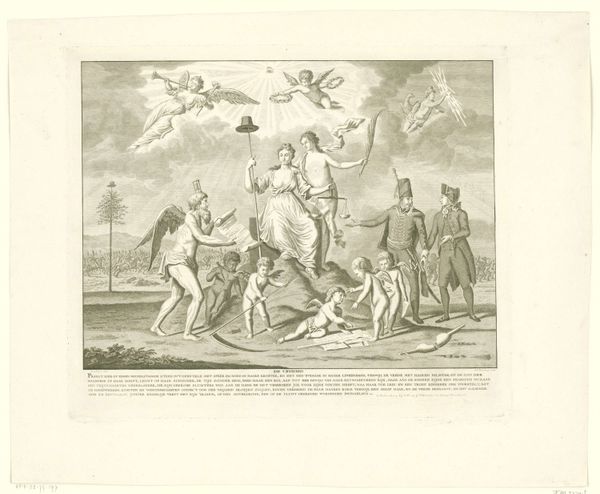
Spotprent op de val van Beurnonville, de Franse minister van Oorlog, 1793 1788 - 1793
0:00
0:00
print, etching, engraving
#
narrative-art
# print
#
etching
#
caricature
#
history-painting
#
engraving
Dimensions: height 432 mm, width 368 mm
Copyright: Rijks Museum: Open Domain
This satirical print depicting the fall of Beurnonville, the French Minister of War, was made in 1793 by an anonymous Dutch artist. It’s an etching, a medium well-suited to the production of political cartoons that could circulate widely. The image creates meaning through a complex layering of visual codes, cultural references, and historical associations. The Dutch Republic, in which this was made, was at this time caught between the French Revolution and the old order. Here, Beurnonville is shown falling from a wagon pulled by donkeys and led by a devil, while figures representing Dutch cities and institutions flee. The Leidsche Poort, or Leiden Gate, a symbol of the city of Leiden, is shown collapsing. The print is clearly anti-French, representing the French Revolution as chaotic and destructive. The artist uses satire to critique the revolutionary ideals and warn against their spread into the Netherlands. Resources to understand the history here include pamphlets and other printed ephemera. The meaning of art is always contingent on its social and institutional context.
Comments
No comments
Be the first to comment and join the conversation on the ultimate creative platform.
